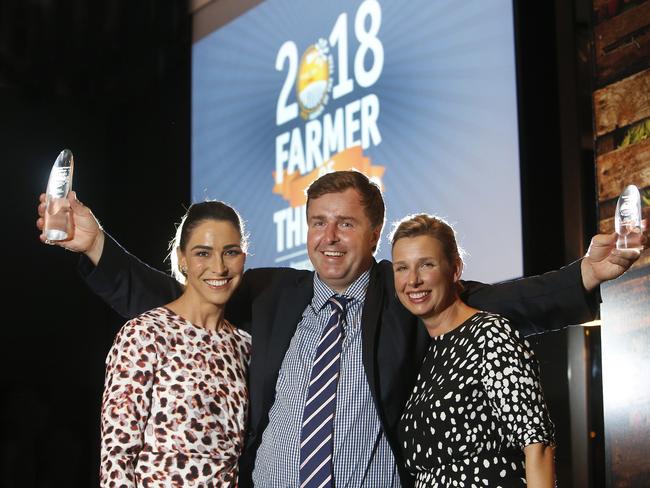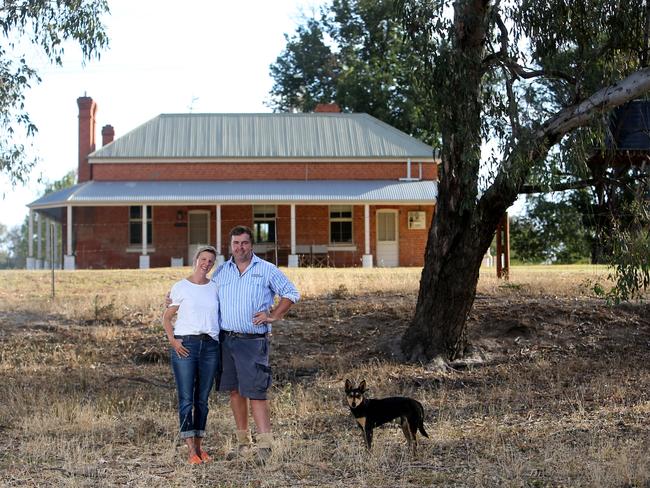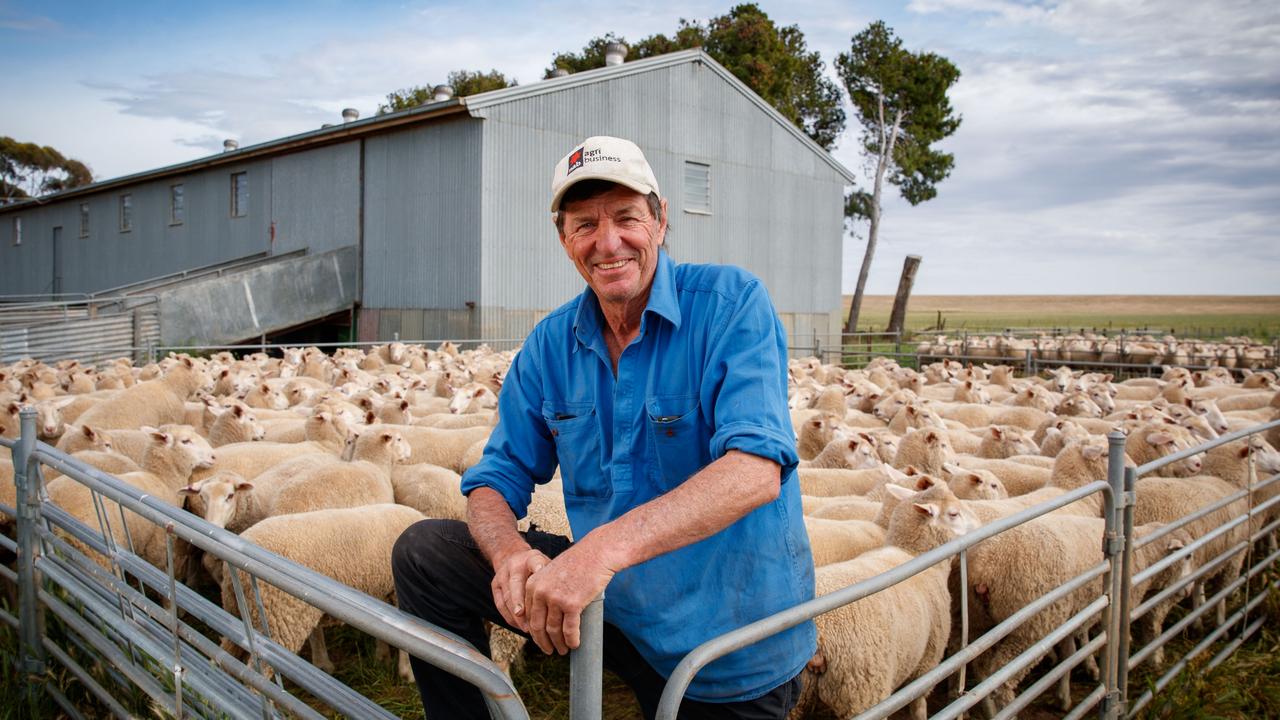Bulls step up to plate as appetite for quality grows
Rising demand for premium lamb promises rich rewards for Holbrook farmers Tom and Phoebe Bull.

TOM and Phoebe Bull haven’t found much time in recent months to even consider resting on their laurels. The time since February, when the leading sheep producers from Holbrook in southern NSW were named winners of The Weekly Times Coles 2018 Farmer of the Year, has been somewhat of a whirlwind.
As well as buying more land, they’ve overseen the lambing of 6000 ewes and teamed up with one of the nation’s leading butchers to launch a premium lamb brand that they hope will act as a springboard to the world for their product.
And, if that’s not enough, they are now busily preparing for their annual two-day production sale in November featuring a massive catalogue of 1200 rams.
TOM AND PHOEBE BULL
HOLBROOK, NSW
WINNERS of The Weekly Times Coles 2018 Farmer of the Year
RUN the Lambpro studs comprising 6000 ewes
LAUNCHED the Kinross Station Hampshire Down lamb brand
WILL offer 1200 rams at auction in November

The Bulls, who operate the Lambpro studs producing genetics for clients that produce a combined 800,000 lambs, were recognised as Farmers of the Year for their efforts in breeding sheep for marbling — a key trait when it comes to meat eating quality.
Tom, who has a background in the meat processing sector and laments the “blindingly obvious” lack of segmentation in the Australian lamb industry, launched their Kinross Station Hampshire Down stud two years ago as a research, development and genetics platform from which to produce premium “five-star” lamb. He is excited about a future where farmers are rewarded with significant premiums for producing top-shelf product.
GREEN DREAM
WHEN The Weekly Times caught up with Tom on the farm at Holbrook recently, lamb marking was in full swing and increased lambing percentages, in addition to record lamb prices and an improved season, were providing plenty of reasons for optimism.
“We’re about 50mm of rain in front of where we were this time last year,” Tom said. “And the timing of the rain has been much better — last year we had a big dump in summer whereas this year we had a fairly dry summer and at the end of March it came down.”
The improved conditions helped consolidate lambing percentages at an impressive 160 per cent across the board. “These twin mobs here are going about 185 per cent and yesterday we had mobs that were up over 200 per cent,” Tom said. “We’re pretty happy with that.”
The Bulls recently purchased a further 728ha, taking their total land ownership to 1820ha. “It means we need every ewe we can get — fully stocked we hope to get up around that 8000 mark.”

TOP SHELF
TOM said with lamb still considered a commodity, the industry was being forced to play catch-up to beef, where breeds such as Angus and Wagyu had now established footholds in the consumer market as billion-dollar brands.
In 2016, the Bulls launched the Prime Lamb Improvement Company to help them understand profitability and consumer acceptance of both their maternal and terminal sheep genetics. Information collected is then used in the design and production of sale rams.
The top 100 rams for marbling on the Sheep Genetics Australia database are Kinross rams, from a total pool of 45,000.
This month the Bulls will launch the Kinross Station Hampshire Down lamb brand at the boutique Victor Churchill butcher in Woollahra — one of Australia’s richest postcodes — in Sydney’s leafy eastern suburbs.
The brand is deliberately aimed at the top-shelf market with Meat and Livestock Australia research indicating Australians are willing to fork out 2½ times the average price of lamb for five-star product.
GETTING IT RIGHT
TOM said the brand was still effectively in trial phase with a view to expanding it both domestically and internationally.
The lambs processed under the brand have been for fed at Holbrook for 150 days a “secret herbs and spices mix” comprising barley, lupins and oats and slaughtered to produce a heavy 40kg carcass.
“What we are feeding them is not rocket science but with grain prices where they are it wouldn’t take much to lose money on lamb, so what we don’t want to do is upscale until the economics are right,” Tom said.
He said it was about perfecting the correlation between nutrition and marbling in particular.
“The market is pretty simple, we’ve always said that,” Tom said. “People want high-marbling lamb, but for us it is working out how heavy you take the lambs and what is the cost of doing so.
“And it is working with different types of nutrition because if you look at beef, 60 per cent of marbling variation is nutrition — so it doesn’t matter what you do with the genetics.
“There is no shortage of butcher shops willing to take it on, but you’ve got to get the model right. We can then upscale really quickly.”

BRAND STAND
TOM said the idea was to be turning off 100 lambs a week to the brand by next year, including to the lucrative export markets of China and the Middle East. Victor Churchill is also looking at expanding its presence to New York City.
The launch of the brand is well timed given the recent strong demand for Australian lamb that has sent saleyard and processor prices soaring. Meat and Livestock Australia’s heavy export lamb indicator topped at a record 998c/kg in the middle of July and consistently averaging more than 900c/kg during the second half of June and July.
Retailers have also raised prices for certain cuts. Lamb cutlets were as much as $55/kg in supermarkets last month with specialty butchers charging as much as $65/kg for certain cuts.
Tom predicted prices could go as high as $100/kg for premium quality cuts.
“It is just about taking lamb to another level,” he said.


